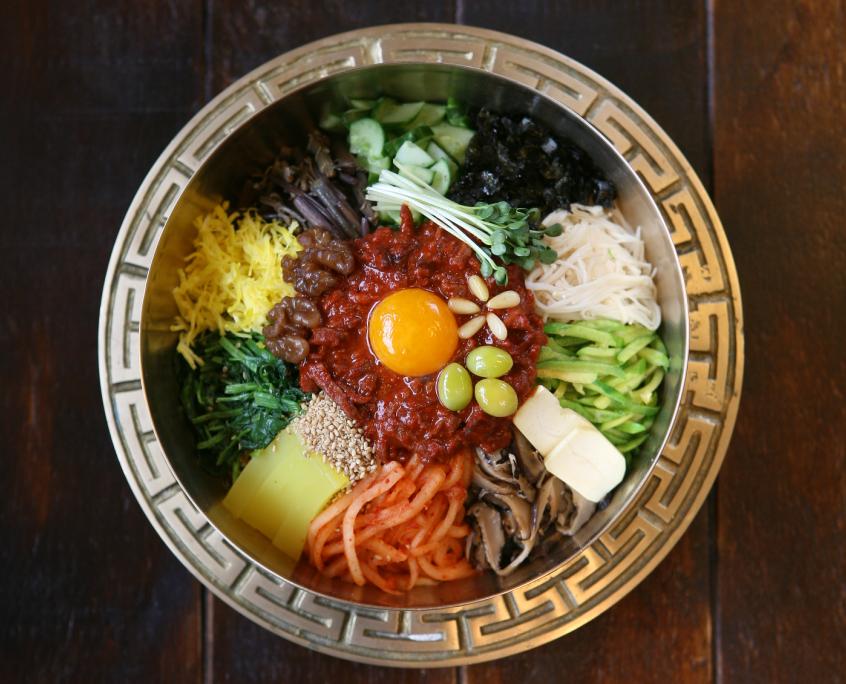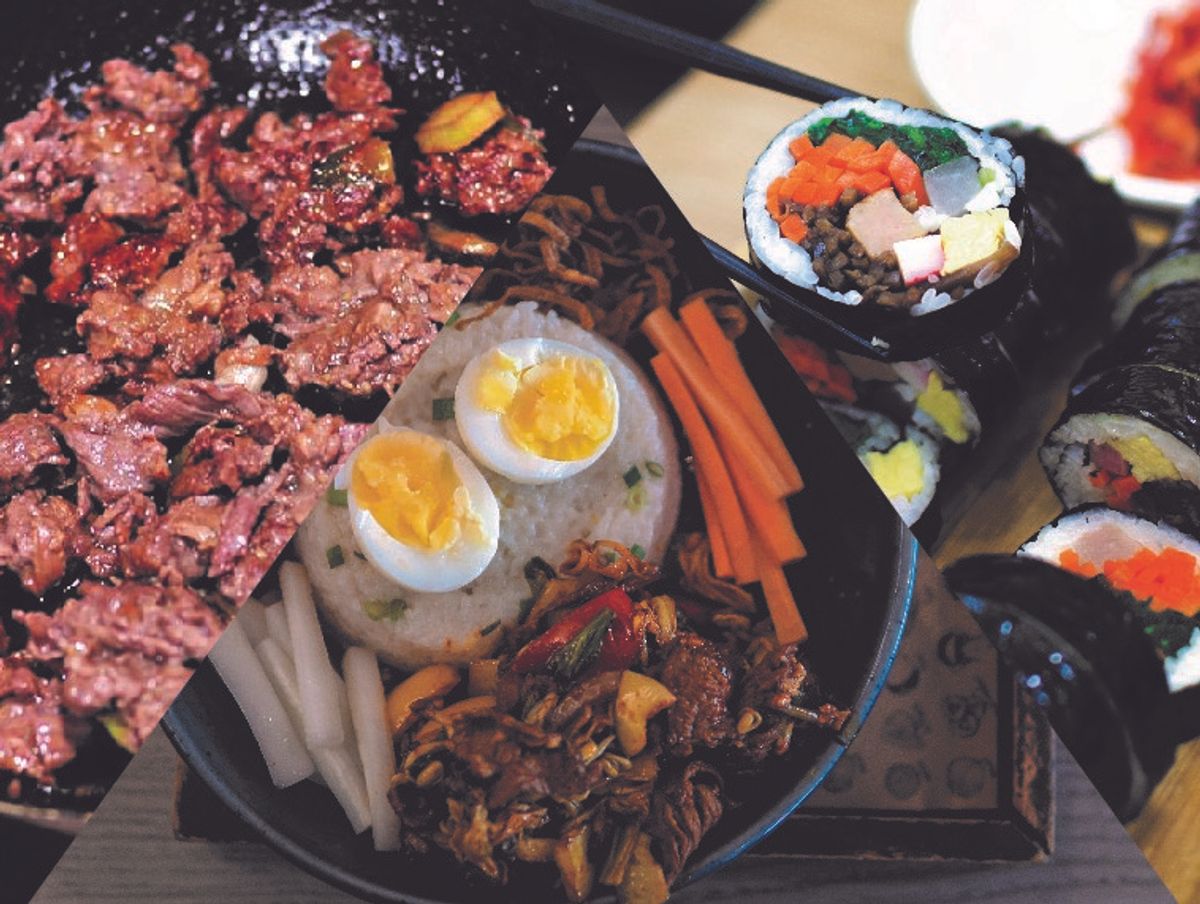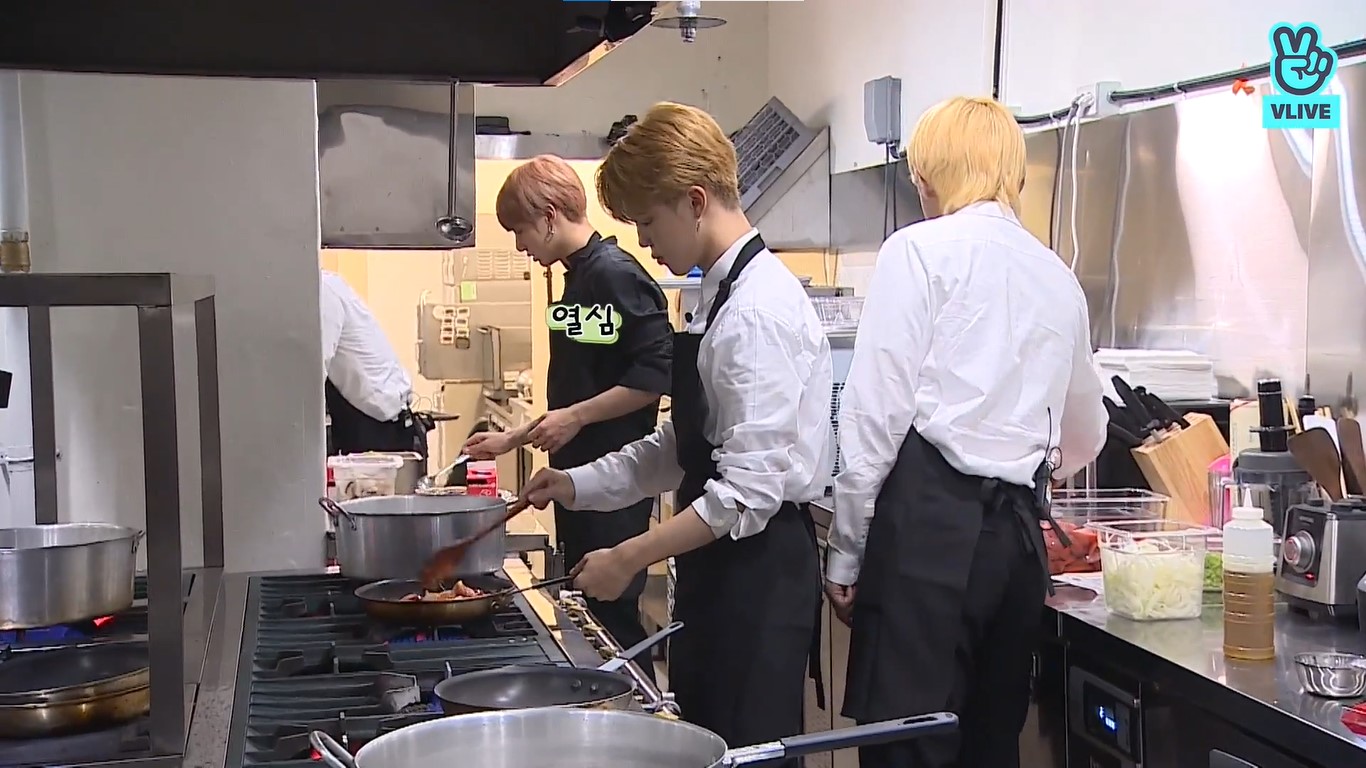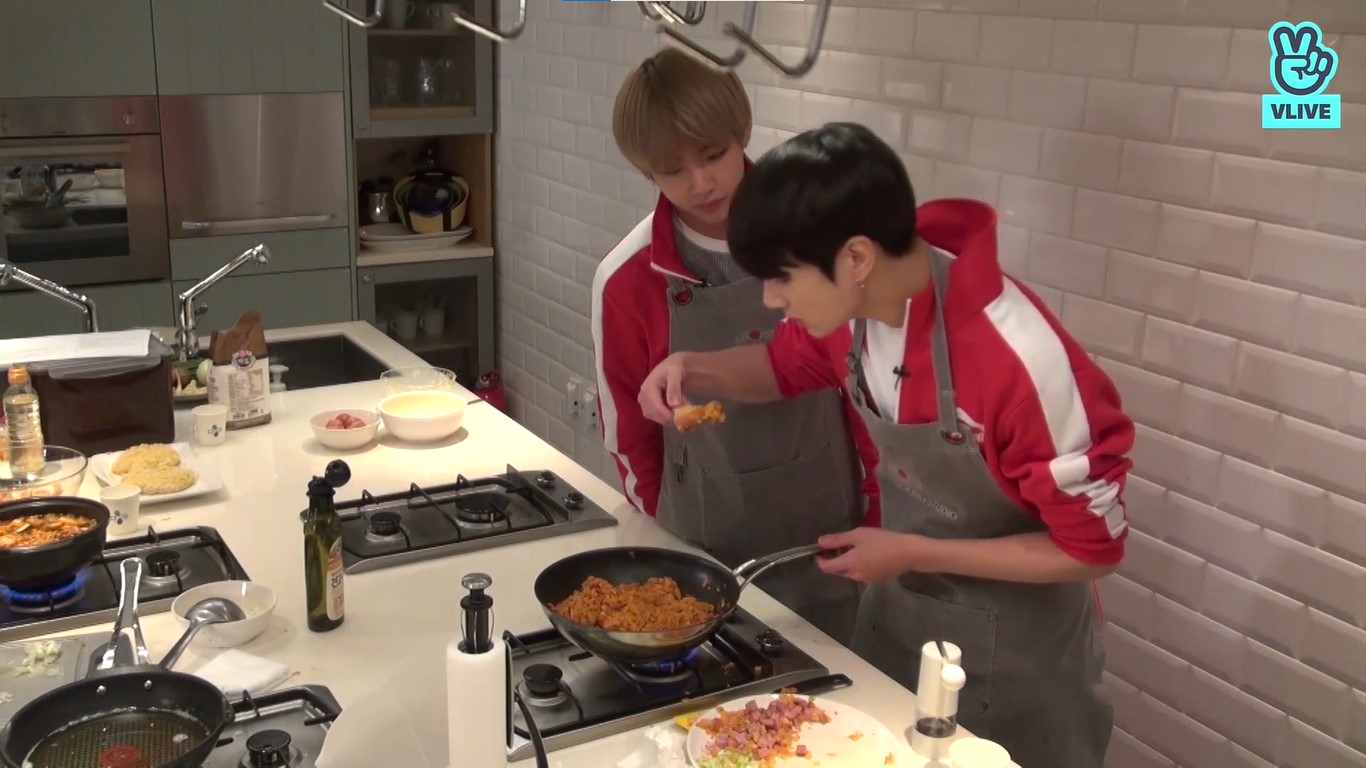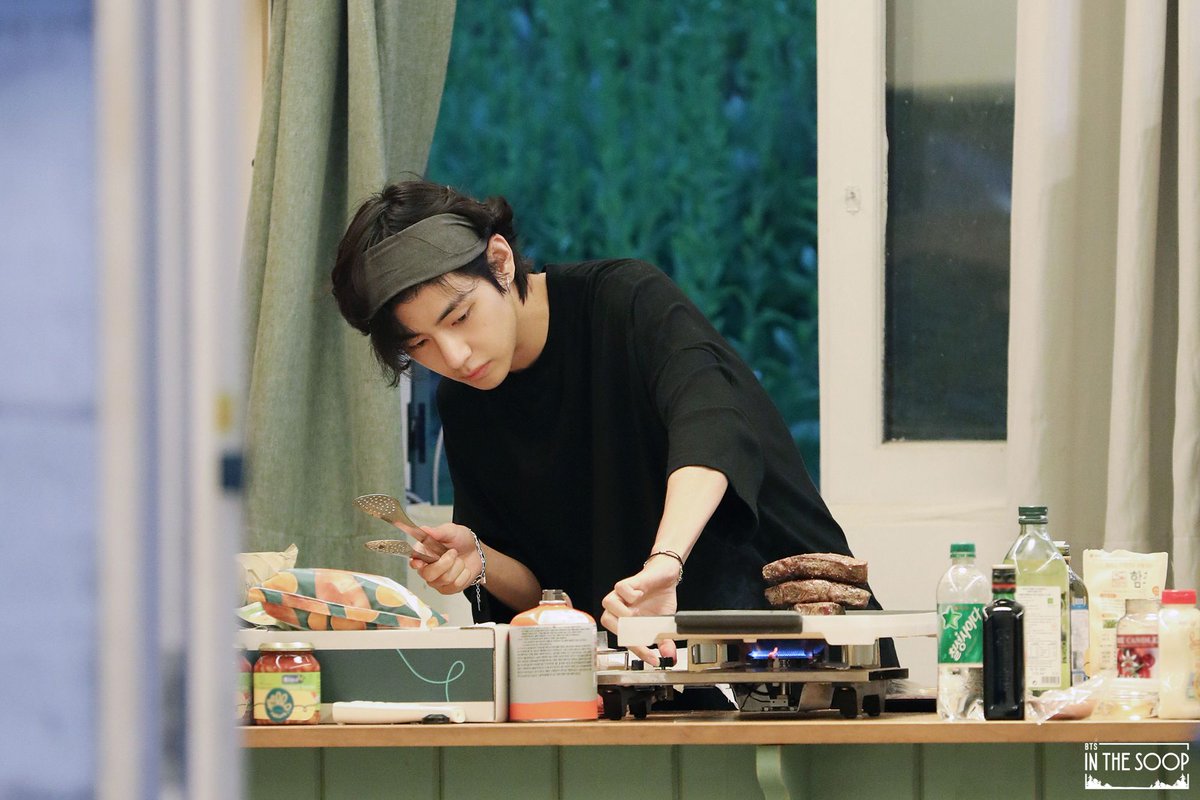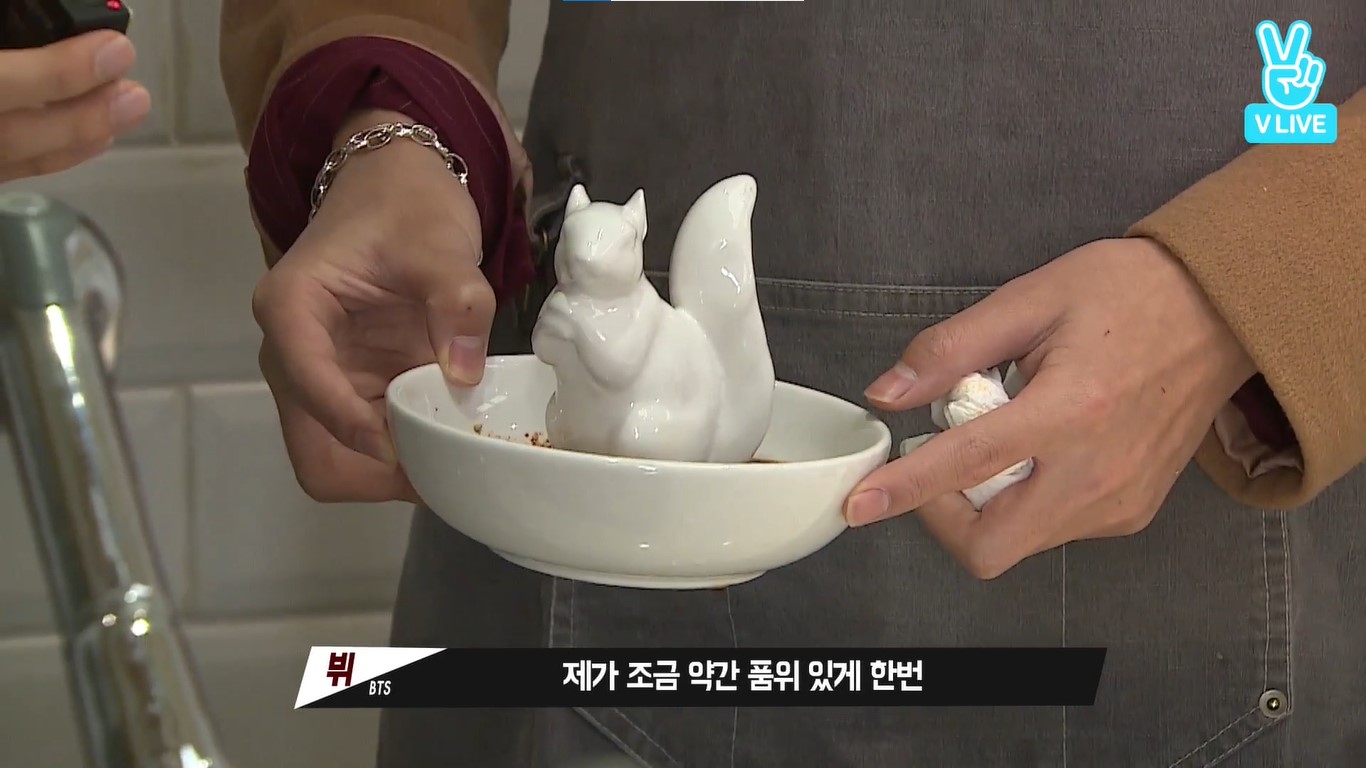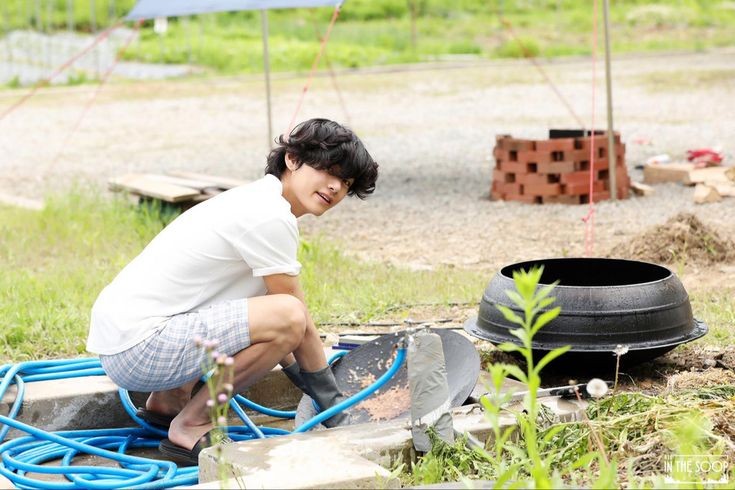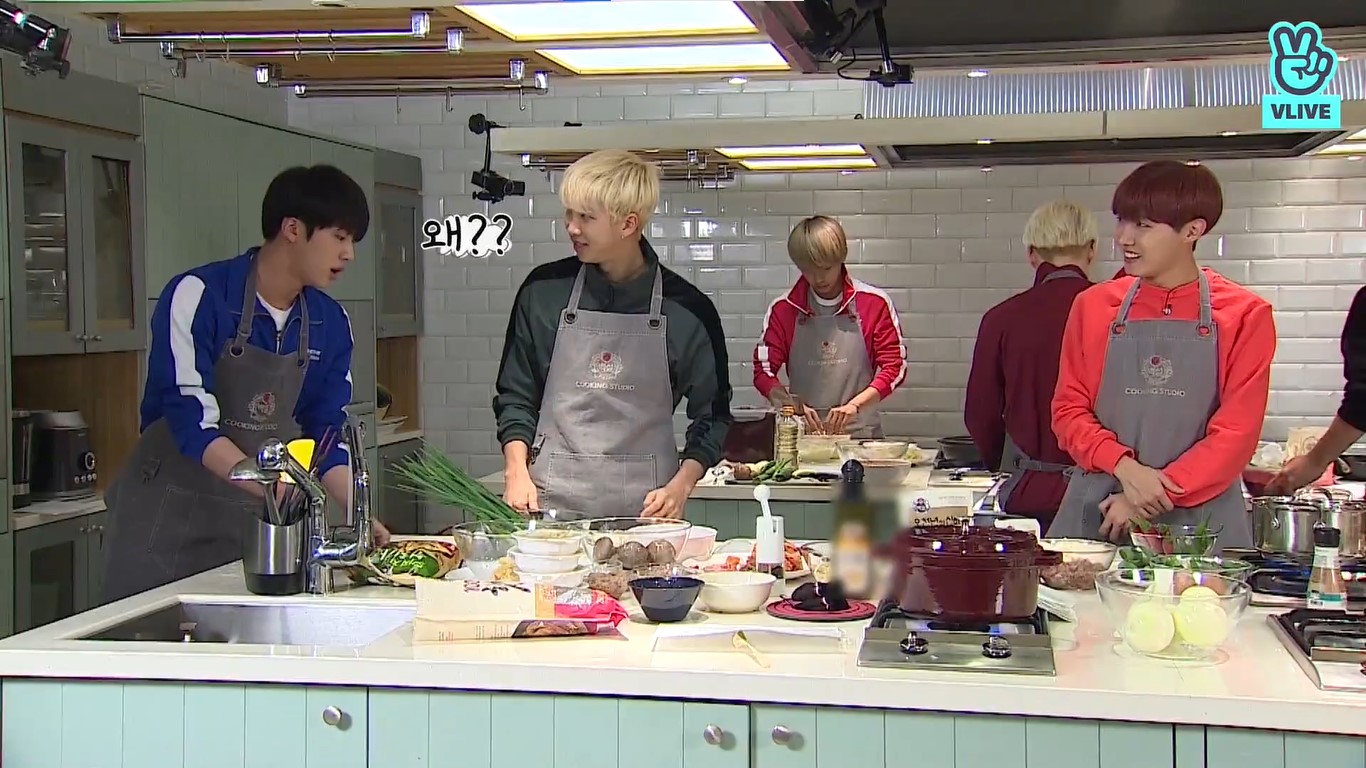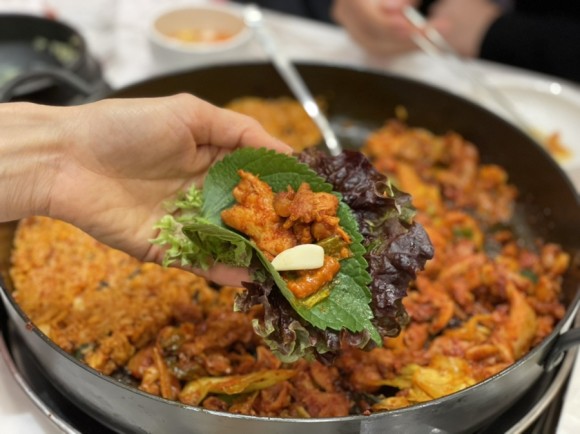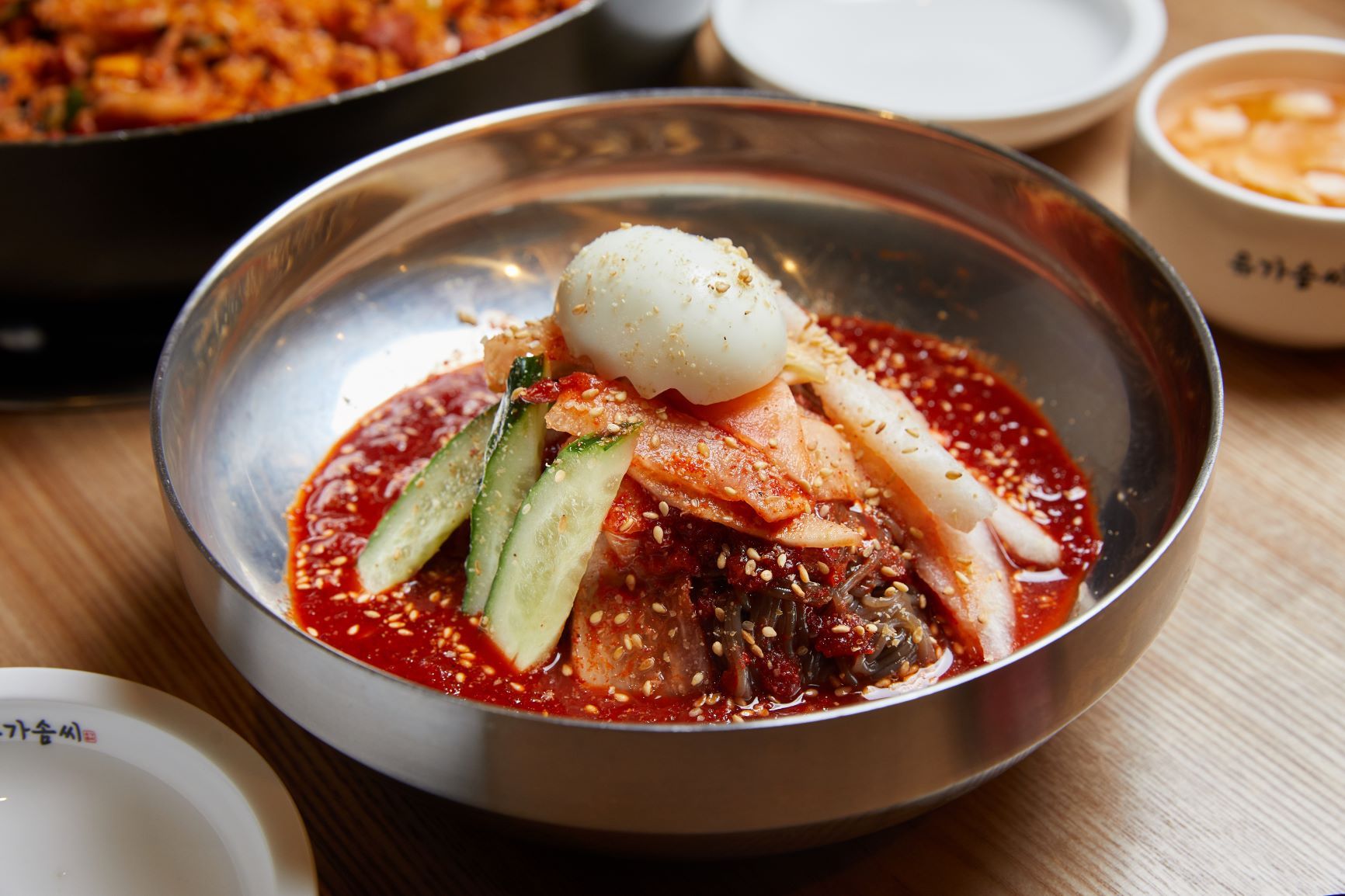Do you often see K-drama characters eating well-loved Korean dishes and wonder what exactly they’re eating? Well, you’ve come to the right place!
Introduction to Korean Food in K-dramas

A spicy red broth bubbles in a hot stone pot, with hearty vegetables and cubes of soft tofu. In almost every K-drama, food is shown at least once. Even if you aren’t well versed in Korean foods, seeing these well-loved Korean dishes are still just as mouth-watering. From the intricately made noodle dishes, to the delicious rice dishes, Korean food is truly the comfort food you didn’t know you needed. In many dramas, foods such as tteokbokki (spicy rice cakes), bibimbap, and jjajang myun (black bean noodles) are really popular. However, there are many other well-loved Korean dishes you might not have heard of. So, let’s check out five well-loved Korean dishes that are featured in K-dramas!
Jjamppong
 It’s Okay to Not Be Okay (2020) is a 16 episode romantic drama that aired on tvN and streams on Netflix. Throughout this drama, one of the characters often mentions how jjamppong is his favorite dish. So, what is this “jjamppong,” you might ask?
It’s Okay to Not Be Okay (2020) is a 16 episode romantic drama that aired on tvN and streams on Netflix. Throughout this drama, one of the characters often mentions how jjamppong is his favorite dish. So, what is this “jjamppong,” you might ask?
Main Ingredients

Jjamppong (짬뽕) is a well-loved Korean dish, which comprises of a spicy seafood broth with noodles, and a variety of vegetables and shellfish. A key ingredient is soft and chewy egg or wheat noodles, which can also be substituted with ramen or udon noodles. Some of the main vegetables include cabbage, carrots, onions, and baby bok choy. As for shellfish, jjamppong commonly has mussels, clams, prawns or shrimp, and squid rings. This noodle soup doesn’t have variations, as other soup dishes might. However, you can always swap out the types of vegetables and shellfish for others—it’s really about how you like it! On the side, jjamppong usually comes with a yellow pickled radish, which is used as a palate cleanser. So, would you try this well-loved Korean dish?
When is Jjamppong Eaten?
Jjamppong is a classic favorite, whether it’s for lunch or dinner. This hot noodle dish is perfect for a rainy day, or even on a cold winter day—it’s certainly a comfort food. But, true jjamppong fans will even eat it during the warm summer months. If you enjoy spicy food and noodles, then this well-loved Korean dish is a perfect one to try. I’ll have to warn you, though, it can get pretty spicy, especially at the bottom of the bowl!
If you’d like to try making it yourself at home, you can find a recipe for it here from My Korean Kitchen.
Jjamppong in It’s Okay to Not Be Okay
Watch the trio enjoying their delicious jjamppong in the video below:
[embedyt] https://www.youtube.com/watch?v=IFHbnWUpeBA[/embedyt]
In this heart-warming scene, Moon Gang Tae (Kim Soo Hyun) takes Moon Sang Tae (Oh Jung Se) and Ko Moon Young (Seo Yea Ji) to eat jjamppong. These noodles play a nostalgic role in the brothers’ past, and the scene emphasizes just how comforting this meal is. However, on the table, the side dishes display yellow pickled radish, which is used to quench mouth fires! When I say the broth is spicy, it’s truly spicy, so be sure to try the side dishes, too.
And be sure to check out It’s Okay to Not Be Okay on Netflix!
Fried Chicken and Beer

Crash Landing on You (2019-20) is a romantic comedy drama that aired on tvN and streams on Netflix. A variety of foods are displayed throughout this drama; however, fried chicken and beer is quite a significant meal. This well-loved Korean dish is common in other countries, but in Korea, it’s a very trendy item to order!
Chicken and Beer’s Popularity in Korea
 Chicken and Beer (치맥 or Chi Maek) is a well-loved item on the menu in Korea. Not only is fried chicken a versatile food, but it’s also paired very well with a refreshing glass of beer. Part of Korean culture is to gather in a restaurant booth and eat fried chicken with some friends or family. However, because this well-loved Korean dish is such a well-known meal, many of these restaurants pop up, especially in Seoul. One of the more popular restaurants is called bb.q Chicken, which is often featured in many Korean dramas. So, next time you watch your favorite K-drama, you might see this restaurant appear!
Chicken and Beer (치맥 or Chi Maek) is a well-loved item on the menu in Korea. Not only is fried chicken a versatile food, but it’s also paired very well with a refreshing glass of beer. Part of Korean culture is to gather in a restaurant booth and eat fried chicken with some friends or family. However, because this well-loved Korean dish is such a well-known meal, many of these restaurants pop up, especially in Seoul. One of the more popular restaurants is called bb.q Chicken, which is often featured in many Korean dramas. So, next time you watch your favorite K-drama, you might see this restaurant appear!
When is Fried Chicken and Beer Eaten?
Because fried chicken and beer is inexpensive and simple, this well-loved Korean dish is often eaten in a casual setting. This meal is the perfect one to have after a long day, whether it’s with friends, classmates, or co-workers! It’s also a meal that many people eat when they’re celebrating something. A lot of times, people tend to go for fried chicken while watching a sports game on TV. The excitement from the game, along with friends and some chicken and beer, is surely a satisfying feeling!
Fried Chicken and Beer in Crash Landing on You

Similarly to many other K-dramas, Crash Landing on You features a plethora of well-loved Korean dishes. However, one of the most common foods displayed throughout the drama is fried chicken and beer (we love product placements). Of course, the bb.q Chicken restaurant makes its appearance on several occasions, with its savory and crispy chicken. Watching anyone eat this will definitely make your mouth water, but your favorite characters from CLOY eating it is even better! I promise you, the tenderness and crispiness from the chicken along with a cold glass of beer is worth it.
Watch the video below from FEATR to learn how to make this well-loved Korean dish from your own kitchen! And of course, don’t forget to check out Crash Landing on You on Netflix!
[embedyt] https://www.youtube.com/watch?v=kGkg9xA74PQ[/embedyt]
Mul Naeng Myun

Weightlifting Fairy Kim Bok Joo (2016-17) is a romantic comedy that aired on MBC and streams on Viki with a subscription to Viki Plus. This well-loved Korean dish is truly a favorite in this drama, not to mention how appetizing Kim Bok Joo makes this dish appear!
Main Ingredients
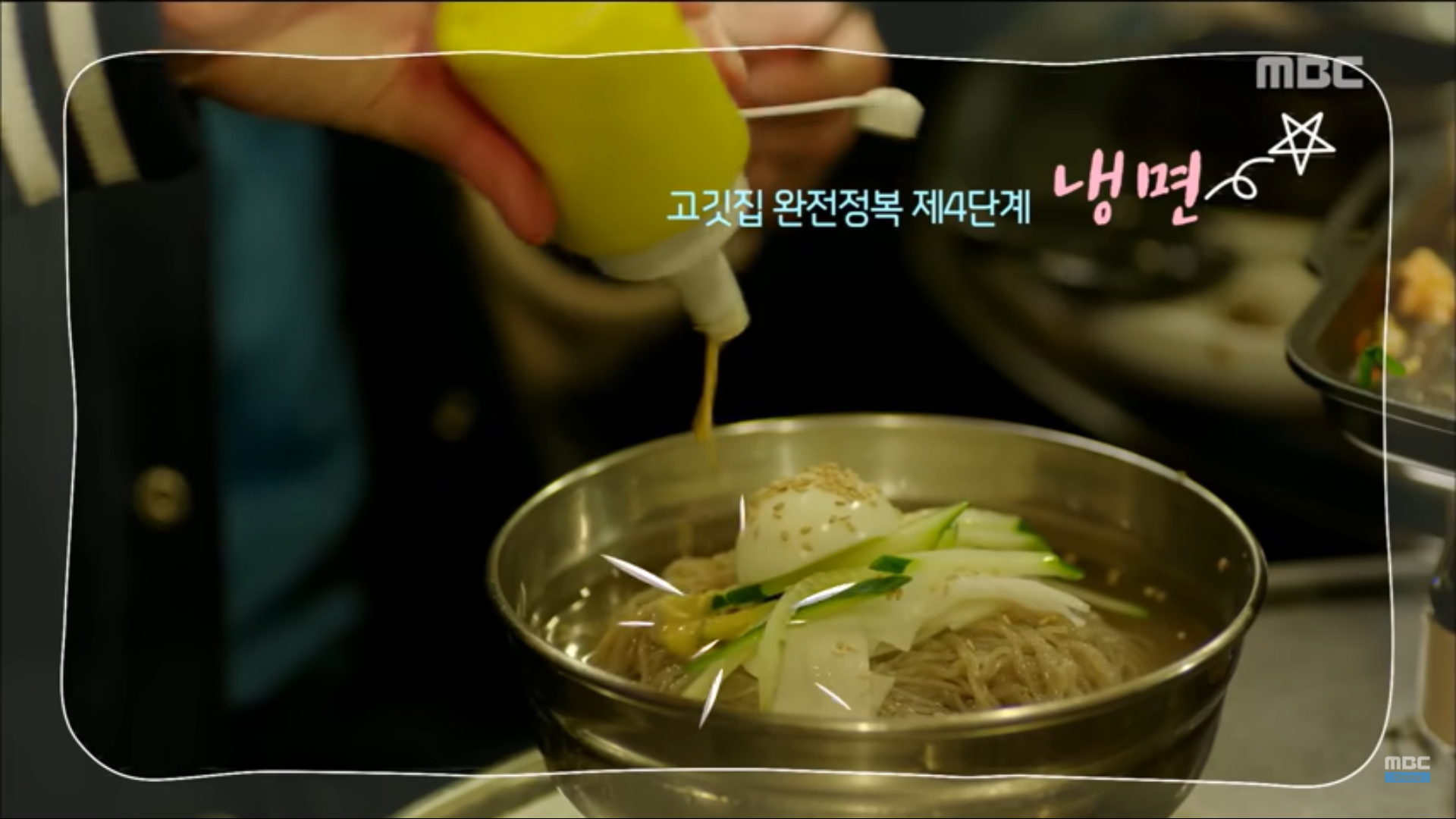
Mul naeng myun (물냉면) is something quite unique when it comes to Korean cuisine. Instead of a hot bowl of noodles, mul naeng myun has a cold and refreshing broth. Some of the main ingredients include buckwheat noodles, cucumbers, Korean pears, radishes, boiled beef, and a hard boiled egg. These flavors blend sweet and savory together, which is a great combination with noodles!

Not only is there mul naeng myun, but there’s another version called bibim naeng myun (비빔냉면). Bibim naeng myun—similarly to mul naeng myun—is served and eaten cold. The difference is, bibim naeng myun is spicy. Main ingredients include brisket beef, radishes, Korean pears, cucumbers, and a hard boiled egg. But of course, we can’t forget about the spicy sauce! This bibim sauce’s main ingredients include beef broth, Korean chilli flakes, and Korean chilli paste. So, if you want a refreshing noodle dish, but also enjoy spicy food, then this is the dish to try!
When is Mul Naeng Myun Eaten?
Many times, this well-loved Korean dish is eaten during the hot summer weather. Because there are ice cubes in the broth, these noodles are one of the best dishes to enjoy in summer. This dish is also eaten after a nice Korean BBQ, since these noodles act as a palate cleanser. As I mentioned earlier, this exquisite blend of sweet and savory flavors is definitely one you won’t want to miss!
You can find the recipe here for Mul Naeng Myun and here for Bibim Naeng Myun.
Mul Naeng Myun in Weightlifting Fairy Kim Bok Joo
Check out Kim Bok Joo and her friends eating mul naeng myun in the video below!
[embedyt] https://www.youtube.com/watch?v=YNqMj7PBffc[/embedyt]
The coach encourages Kim Bok Joo and her friends to eat well, since they’re members of the weightlifting team. In this mouth-watering scene, Kim Bok Joo explains the correct order one should eat in, ending with mul naeng myun. You’ll definitely want to try some while the weather is still warm, especially after watching them eat it!
To see more delicious meals in Weightlifting Fairy Kim Bok Joo, watch it on Viki!
Kimbap

Do Do Sol Sol La La Sol (2020) is a romantic Korean drama which aired on KBS and streams on Netflix. Since the main female lead, Goo Ra Ra, absolutely loves eating and trying new foods, there’s always an appetizing Korean dish on screen.
Main Ingredients

Kimbap (김밥) is truly a versatile food within Korean cuisine. If you’ve never seen this well-loved Korean dish, then the best way to describe kimbap is Korean sushi. A sheet of seaweed and plenty of rice is the main foundation for this quick meal. Most of the time, kimbap is made with a variety of vegetables and sometimes includes meat. Main vegetables include spinach, yellow pickled radish, burdock root, and carrots. Meats, on the other hand, can either be beef bulgogi, spam (pork), or Korean Ham. Some additional ingredients can be egg, kimchi, or even imitation crab. So, if you want a quick meal on the go, kimbap is the one to try!
[embedyt] https://www.youtube.com/watch?v=CTr2juINsGI[/embedyt]
When is Kimbap Eaten?
Ever have those days when you’re rushing around and need a quick bite before running late? Well, kimbap is one of those quick on-the-go foods that you’ll end up loving. This well-loved Korean dish is known to be an everyday type of food, but it’s mostly eaten for lunch. It’s also eaten at room temperature—unlike sushi—so all of the delicious fillings will be warm and the rice will be soft! Because of its mix of vegetables, protein, and carbs, it’s a perfect balance to get you through your busy day.
Want to try making kimbap at home? Try this recipe from My Korean Kitchen here.
Kimbap in Do Do Sol Sol La La Sol
Kimbap is depicted in a very appetizing way in Do Do Sol Sol La La Sol, especially since there are four versions. Its savory flavors along with its crunchy texture will surely make you crave it! Not to mention how delicious Goo Ra Ra makes kimbap look at the end~
To watch more well-loved Korean dishes in Do Do Sol Sol La La Sol, check it out on Netflix!
Japchae
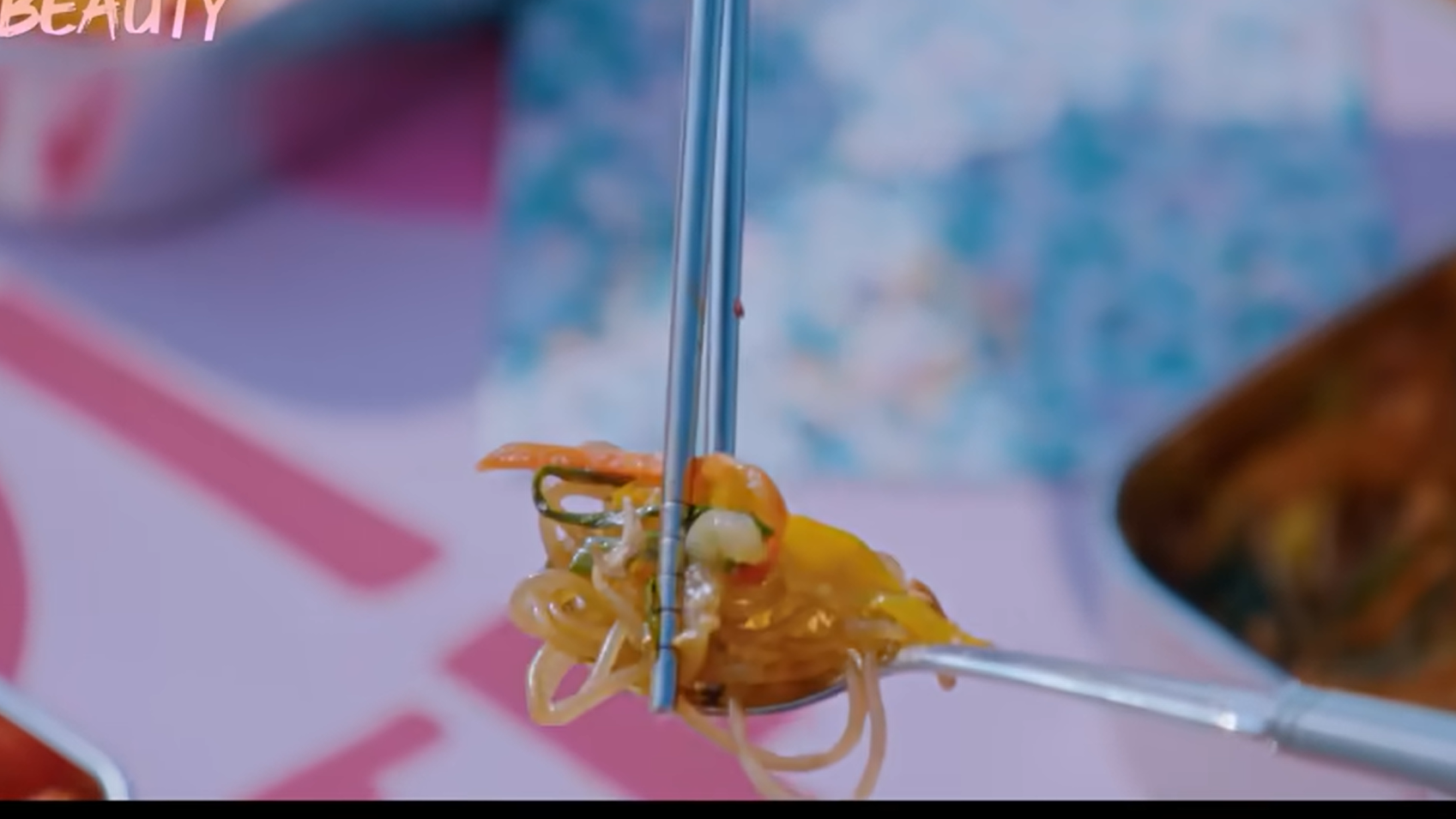
True Beauty (2020-21) is a romantic comedy drama that aired on tvN and streams on Viki with a standard subscription. This drama features many well-loved Korean dishes, but one that is shared between the two leads is Japchae.
Main Ingredients
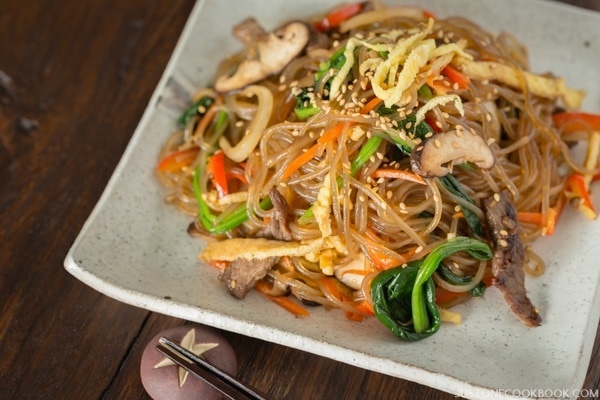
Japchae (잡채) is one of the most common dishes in Korean cuisine, and is also eaten during holidays. It not only has savory flavors, but it’s also blended with a hint of sweetness. One of the key ingredients in japchae are glass noodles, which are made of potato starch. It also has an assortment of vegetables, like spinach, scallions, carrots, shiitake mushrooms, and onions. There’s also a meat option, which is often beef; however, it tastes just as good vegetarian! This well-balanced meal is definitely one you must try!
When is Japchae Eaten?
This well-loved Korean dish is often eaten during special occasions and holidays, such as birthdays, weddings, and Chuseok (Korean Thanksgiving). Japchae even dates all the way back to the Joseon Dynasty, so it’s been a well-loved dish for centuries! Today, japchae is more commonly eaten as an everyday meal, either for lunch or dinner. Something quite unique about Japchae is that it’s eaten with rice—interesting, right? The reason behind this is because japchae can also be considered as a side dish, or banchan. But, it can also be eaten alone as a noodle dish—one that you’ll quickly grow fond of!
Try making this very well-loved Korean dish at home using this recipe from My Korean Kitchen.
Japchae in True Beauty
During their lunch picnic at school, Im Ju Kyung and Lee Su Ho enjoy a variety of foods. With a range of side dishes, japchae is one of them. These glass noodles are topped with carrots and scallions, which look extremely appetizing as Im Ju Kyung offers some to Lee Su Ho!
To see other amazing Korean dishes featured in True Beauty, watch it now on Viki!
Which Well-Loved Korean Dish Do You Want to Try?
After reading about five well-loved Korean dishes featured in K-dramas, which one would you want to try first? Of course, a Korean restaurant with all of these dishes may not be conveniently in your area. But, you can always try making them at home!
If you enjoyed reading about food, check out “How to Make Traditional Korean Foods” and if you’d like to read more about K-dramas, check out my blog on “5 Couples in K-Dramas with Amazing Off-Screen Chemistry.”
To learn more about Korean noodles, check out the video below!
[embedyt] https://www.youtube.com/watch?v=io5Lmg182SQ[/embedyt]


